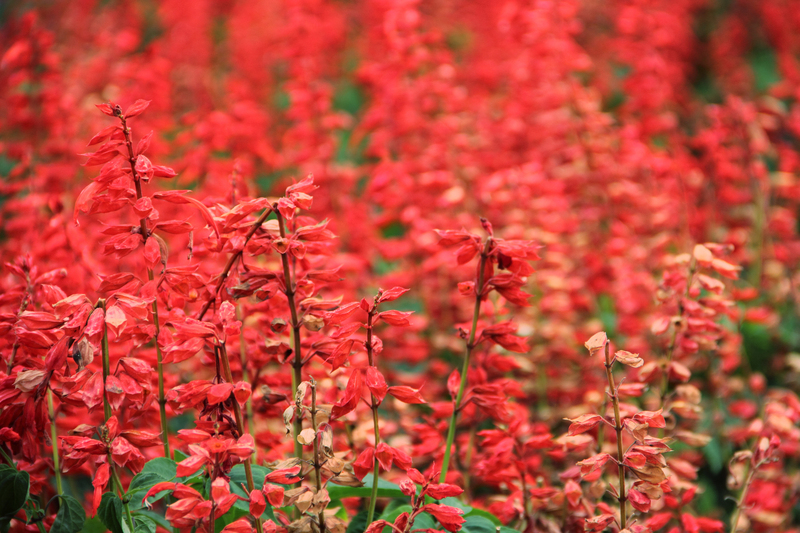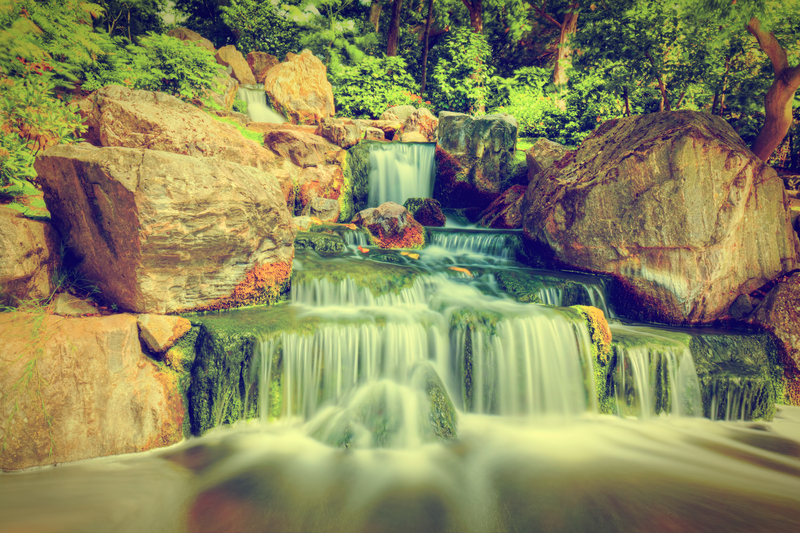Garden Renewal 101: Redefining Forgotten Spaces
Posted on 19/08/2025
Garden Renewal 101: Redefining Forgotten Spaces
Is your backyard gathering dust? Do you have an old flower bed, unused patio, or a corner choked with brambles? Renewing your garden and transforming forgotten spaces isn't just rewarding; it elevates your entire living experience. With thoughtful planning, creative ideas, and sustainable practices, you can redefine any neglected outdoor area into a vibrant oasis--no matter its size or current state.
Why Garden Renewal Matters
Modern life often leaves patches of our yards overlooked. The drive for garden revitalization goes beyond aesthetics; it improves mental health, encourages sustainability, and can even boost your property's value. Let's explore--step by step--how garden makeovers can breathe new life into neglected corners, ensuring you make the most out of your outdoor sanctuary.
Benefits of Restoring Forgotten Gardens
- Promotes biodiversity. Revived spaces support pollinators and wildlife.
- Enhances curb appeal. A lush, intentional landscape creates strong first impressions.
- Improves well-being. Time outdoors can lower stress and improve mood.
- Maximizes property usage. Every part of your land becomes purposeful and beautiful.
- Boosts real estate value. A beautiful, functional garden is a powerful selling point.

Assessing Forgotten Spaces: Know Your Terrain
Before any new planting or decorating, thorough assessment is crucial. Rediscover the unique potential each outdoor zone offers--whether a weedy patch or a dilapidated deck. Here's how to get started:
Walkthrough and Observation
- Map the site--sketch out all areas, noting fences, trees, and hardscapes.
- Spot issues--look for drainage problems, compacted soil, overgrown plants, or shaded spots.
- Identify assets--mature trees, unique stones, or existing structures offer a foundation to build upon.
- Imagine possibilities--envision outdoor rooms, relaxation nooks, or habitat gardens.
Evaluating Soil Health
- Test the soil with at-home kits to check pH and nutrients.
- Look for compaction--if roots struggle, water pools or soil is hard, plan to amend it.
- Remove deep-rooted weeds and add organic matter as needed for a fertility boost.
Planning Your Garden Restoration
A thoughtful design phase ensures your outdoor transformation is both practical and beautiful. Consider function, aesthetics, and sustainability when planning to renew your garden.
Define Garden Zones and Functions
- Identify spaces for entertainment, dining, play, and relaxation.
- Dream big for vertical gardens on fences or walls, or cozy reading corners in shady spots.
- Reserve areas for wildlife habitats, such as pollinator beds or bird houses.
Create a Planting Strategy
- Choose local/native plants for low-maintenance, resilient landscapes.
- Mix textures and layers with shrubs, perennials, ornamental grasses, and groundcovers.
- Use raised beds to redefine boundaries or manage poor soils.
Plan Hardscapes and Structures
- Refresh paths with stepping stones, recycled pavers, or mulched trails.
- Add pergolas, benches, or trellises for visual interest and shade.
- Use old bricks, logs, or reclaimed materials for eco-friendly upcycling.
Garden Rehabilitation: Actionable Steps
Once you have a vision, it's time to roll up your sleeves. Systematic, focused action will transform each neglected garden area into a thriving, functional space.
Step 1: Clean-Up and Clear-Out
- Remove debris, invasive weeds, and dead branches.
- Prune overgrown shrubs and trees for better air and light flow.
- Consider sheet mulching (cardboard topped with organic matter) to suppress weeds and enrich the soil.
Step 2: Soil and Bed Preparation
- Loosen compacted soil using a garden fork or broadfork.
- Mix in compost, aged manure, or leaf mould to add fertility.
- Create defined edges for beds with stones, logs, or metal strips.
Step 3: Plant Selection and Layout
- Place taller plants at the back or center, with lower-growing varieties at borders.
- Choose pollinator-friendly flowers, fragrant herbs, and color-changing foliage for year-round interest.
- Allow for growth--avoid crowding and read spacing recommendations.
Step 4: Install Features and Hardscape Elements
- Add reclaimed wood benches, bird baths, or DIY planters.
- Define pathways with mulch, pebbles, or natural stone.
- Install lighting--solar lamps or string lights create magical evenings outdoors.
Redefining Neglected Corners: Creative Ideas
Ready for a transformation? Redefine your forgotten garden zones with these creative approaches:
The Secret Garden Nook
- Add a curved bench or Adirondack chair beneath a tree or in a cool, shady spot.
- Surround with flowering shrubs and ferns--think hydrangeas, hostas, or astilbe.
- Pathways lined with lavender or catmint offer scent and color.
The Vertical Greenery Wall
- Use pallets, old gutters, or wire frames to create DIY vertical gardens on fencing.
- Plant trailing herbs, succulents, or small annuals for instant impact.
Low-Maintenance Wildlife Corner
- Install a bird bath or small pond for frogs, birds, and bees.
- Test native wildflowers for vibrant color and easy care.
- Leave a log pile to host beneficial insects and natural decay.
Edible Oasis
- Transform a sunny space into raised veg and herb beds.
- Mix edible flowers (nasturtium, calendula) for both harvest and beauty.
- Try espalier fruit trees along fences for structure and food production.
Sustainable Practices for Long-Lasting Renewal
A successful garden renewal embodies sustainable approaches. Eco-friendly landscaping not only benefits the environment but ensures your new garden thrives for years to come.
Water Conservation
- Install drip irrigation or soaker hoses to minimize evaporation.
- Select drought-tolerant native plants for less watering.
- Capture rainwater in barrels for garden use during dry periods.
Composting and Soil Care
- Start a compost pile for food scraps and yard waste--return nutrients to your garden.
- Mulch beds to retain moisture, stabilize soil temperature, and suppress weeds.
- Avoid synthetic fertilizers--choose organic or slow-release amendments.
Welcoming Pollinators and Wildlife
- Cluster flowering plants in groups to make it easier for bees and butterflies to forage.
- Avoid pesticides--encourage beneficial insects for natural pest control.
- Incorporate a range of flower shapes, fruiting shrubs, and seed heads for bountiful wildlife food sources.
Maintaining Your Renewed Garden Spaces
Renewing forgotten corners is just the start. Regular, light maintenance keeps your garden healthy and ever-evolving.
- Deadhead flowers and prune lightly for tidy, prolific blooms.
- Mulch annually to build healthier soil and reduce irrigation needs.
- Keep pathways clear and replenish hardscape surfaces where needed.
- Rotate annuals and replant bare spots to refresh the look each season.
Redefining Spaces: From Vision to Reality
As you embark on your garden restoration journey, remember: every garden is unique. Whether you seek tranquility, a play haven, or a food-growing utopia, any neglected area can become an outdoor retreat with creative renewal strategies and sustained care. Celebrate your progress, experiment with new plants, and enjoy watching your living landscape come alive!

Frequently Asked Questions on Garden Renewal
How do I start renewing an extremely neglected garden?
Begin with a thorough clean-up--remove debris, trim back overgrown plants, and assess soil quality. Focus on manageable zones and prioritize areas for functionality and safety before jumping into design.
What are the best plants for low-maintenance garden renewal?
Choose native perennials, drought-tolerant sedums, lavender, coreopsis, ornamental grasses, and robust evergreens. Local extension offices often have planting guides for your area.
How do I turn a small, forgotten space into something special?
Use vertical gardening, potted arrangements, or a themed nook (like a herb spiral, pollinator patch, or secret seating area). Maximize interest with colorful plants, artful containers, and unique hardscape details.
Final Thoughts: Embrace the Art of Renewal
Redefining forgotten garden spaces is about more than reclaiming space--it's about nurturing a dynamic, ever-changing connection with nature right outside your door. Roll up your sleeves, plant new roots, and cultivate a sanctuary that reflects both your vision and the wild resilience of the natural world.
Garden renewal is a journey--start with a single neglected corner, and let inspiration bloom!

